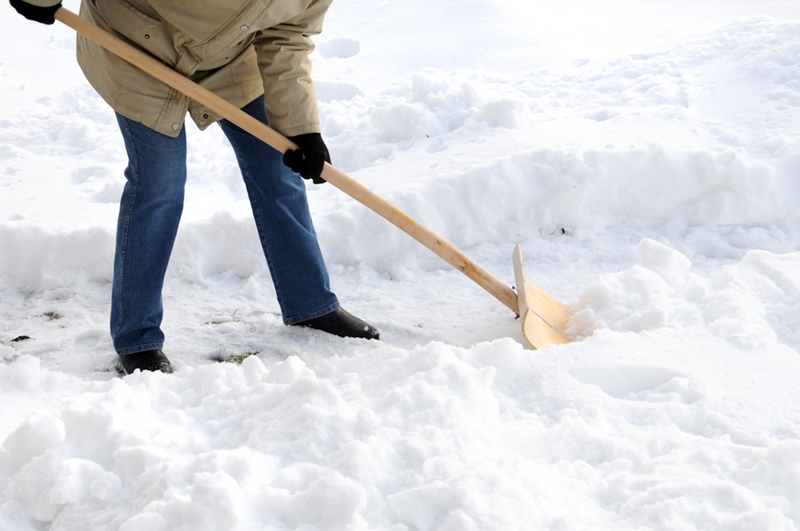For homeowners, winter isn't a time where you can get away with staying indoors all season. Even though it's freezing outside, there's still a lot of work to be done to keep your house in tip-top shape. There's snow to shovel, ice to melt and, if you're super outdoorsy, wood to chop.
These winter maintenance activities don't have to be a chore. In fact, they're a great way to focus on your health during the colder months. Shoveling snow strengthens your shoulders, arms, back, core and legs. Plus, the experts at Harvard Medical School said it burns between 180 and 266 calories per half hour.
Chopping wood also provides lots of health benefits. You might think it's best for your arms, but according to Men's Fitness, it's better for your core and heart rate. Not only do you get to build your abdominal muscles when splitting wood, but you also get to enjoy a nice, warm fire at the end of the day.
Working outdoors in the wintertime can also help you combat seasonal affective disorder. The increased physical activity is a natural mood booster. In addition, if you take care of outdoor chores during the day, the direct sunlight increases your brain's production of serotonin. This hormone known for alleviating depression and, as Chatelaine pointed out, curbing your craving for carbs.
This is also a great excuse to put off yardwork until the weekend. It'll be dark when you get off work, so spend your weekday evenings relaxing with your family. Bring everyone outside on Saturday and Sunday - your kids can make snow angels in the yard as you shovel the walkways.
 Shoveling your yard is a great workout.
Shoveling your yard is a great workout.
Staying healthy while working outside
If you're not careful, you can easily pull a muscle working outside in winter. Dr. Ayla Azad, vice president of the Ontario Chiropractic Association, gave Canadian Living some very helpful safety tips, the first of which is to warm up before heading outside with your shovel, axe or rock salt.
"A lot of people don't think of raking leaves or shoveling snow as exercise, but it is," Dr. Azad, told the publication. "We recommend that you warm up with a brisk walk before you start. A walk increases blood flow to the muscles, and gets the joints moving."
Also, switching things up every once in a while and change which hands hold the shovel. You might feel awkward working with your nondominant side, but this prevents one side of your body from tightening.
Take your time shoveling, and don't try to get the whole yard in one day. Check the forecast for a few consecutive days of clear weather or light snowfall, then break your task up into sections. Shovel the most important areas first: the driveway, the walkway between the garage and the house, and the sidewalk out front.
Also, make sure you have the right equipment. Your boots need a solid grip, especially if the snow has melted and refrozen into ice. Wear goggles when chopping wood to keep your eyes safe from splinters and keep rock salt out of reach of any pets.